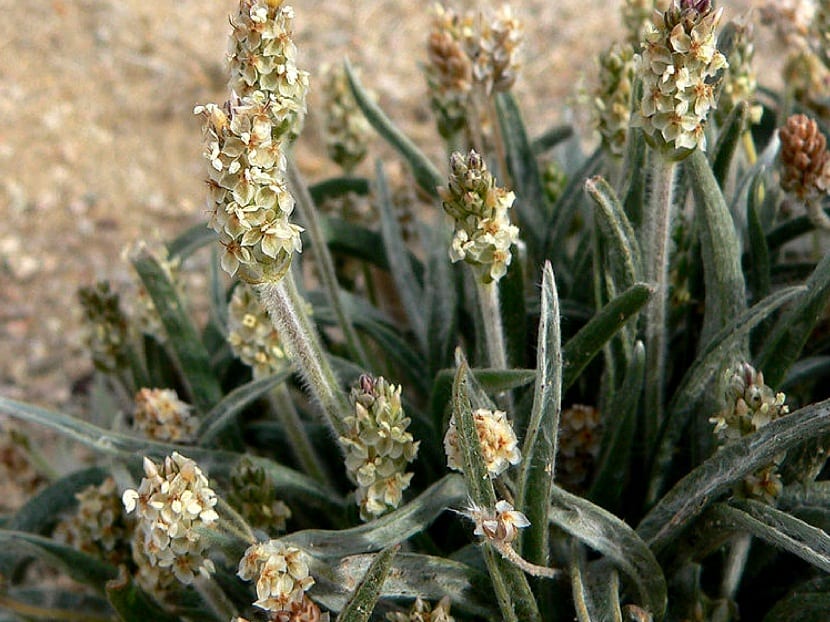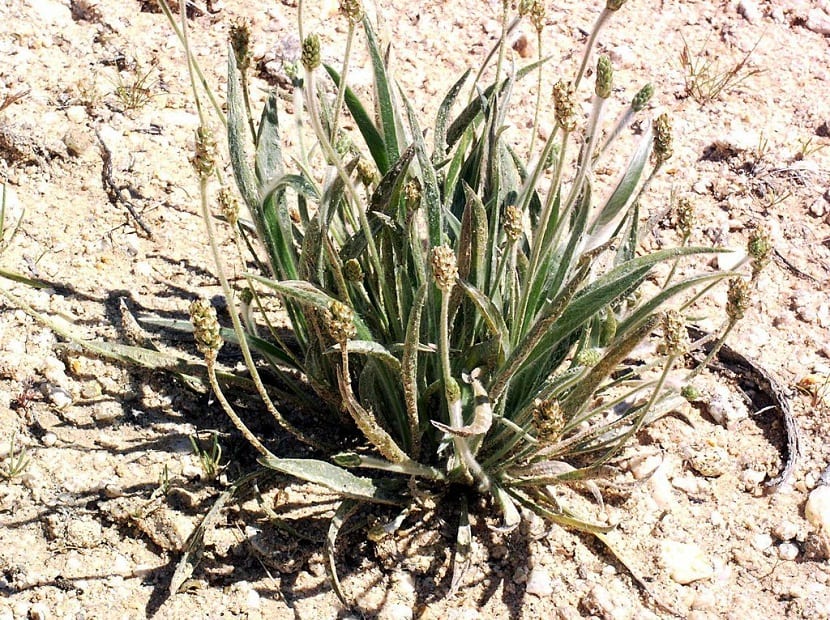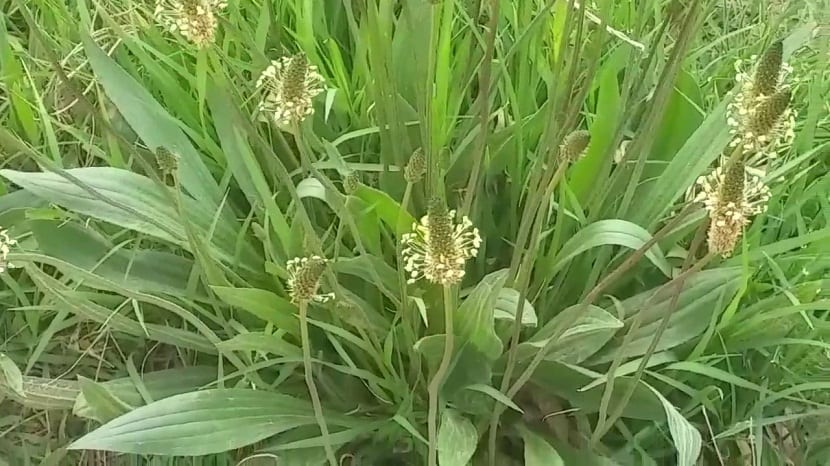
The blond Psyllium whose scientific name is plantago ovata It is a plant native to the Mediterranean, mainly from southern Europe, northern Africa and western Asia. But for its medicinal importance it has spread throughout the world, being a species known for its laxative properties in the traditional medicine system.
Features

It is a small plant covered with white hairs at right angles to its stems and leaves. It grows in cold and dry climates, with irregular rains. It is a unisexual species that pollinated through the wind. Suitable for a wide variety of soils; sandy, medium and clayey; preferably with good drainage. It must remain sunny.
Its leaves are linear, green in color and arise from the stem, these raise spikes that contain small sheathed flowers. The seeds of the plantago ovata they are fairly small (1,5–2 cm) with a brown to reddish hue. The seeds of this plant contain a large amount of mucilage which has many medicinal applications and albuminous matter. The seeds and shell of the plant are edible.
Propagation
The seed is sown in the spring time in a cold environment. When they have reached an appropriate size for handling, proceed to cut the seedlings into individual pots and then planted in early summer. The final sowing can be done outdoors in spring, this being a plant that is not very demanding in terms of water and nutrient requirements and adapts well to the cultivation system.
Multiple medicinal properties have been attributed to blond Psyllium in traditional medicine. Thanks to its mucilaginous skin, the species is used in various industrial applications.
Its seeds are used in a series of laxative medications. These contain a large amount of organic substance known as mucilage, which makes them particularly useful in case of constipation, attributed to various causes. The best, these seeds act on the intestinal walls, without causing any addiction.
Its seeds are recommended when the existence of pictures such as hemorrhoids, fissures, anal fistulas is suspected; in which a smoother evacuation is required and laxative medications are not desired or cannot be used. Due to its extraordinary water absorption capacity, favors the transit of intestinal contents, which facilitates its emptying. It has been determined that the mucilage is practically unaffected by digestive enzymes and bacteria, so it passes through the intestine without undergoing any changes.
Uses

It is being used as part of many colon cleansing programs and even in the prevention of colon cancer. Indeed, some studies have shown that Psyllium, together with wheat bran, can ward off the possibility of colon cancer. The protective effect against this type of cancer has been observed in rats in which tumors were caused in the colon with the use of azoxymethane. Similarly, with the use of psyllium and wheat bran have been observed maximum effects of inhibition of mammary tumors.
For diabetes, the maximum effect of blond psyllium on blood sugar levels occurs when it is mixed or taken with food. In addition to lowering blood sugar levels, the seed hull of blond psyllium also reduces cholesterol in diabetic people who have high cholesterol. Some research has shown that it can effectively lower total cholesterol by as much as 9% and LDL cholesterol by as much as 13%.
The different investigations that have been carried out with the application of this seed have not reached a definitive conclusion of its possible positive effects, however, it can be said that there is evidence that if you can lose body weight and appetite in overweight people.
Furthermore, the plantago ovata It is a herbal medicinal plant used as an astringent, anti-inflammatory, etc. It is also used to treat urinary infections, skin infections, digestive problems, yeast infections, hypertension, etc.
Goodnight
Carlos Julio Acuña wishes to know if the seeds are used in the Psyllium (muscilage) or only the shells that protect the seeds.
How many plants are required (approximately) to harvest a kilogram of Psyllium
my email
carlosjulio043@gmail.com
Thank you
Hi carlos.
I'm sorry, I couldn't tell you. But keep in mind that the fruit with the seed must weigh 5 grams more or less, so to harvest 1kg, more than 900 seeds would be needed.
How many seeds does a plant produce? I do not know. Many. In fact, in online nurseries or on sites like ebay they are sold by the dozen at very low prices.
A greeting.